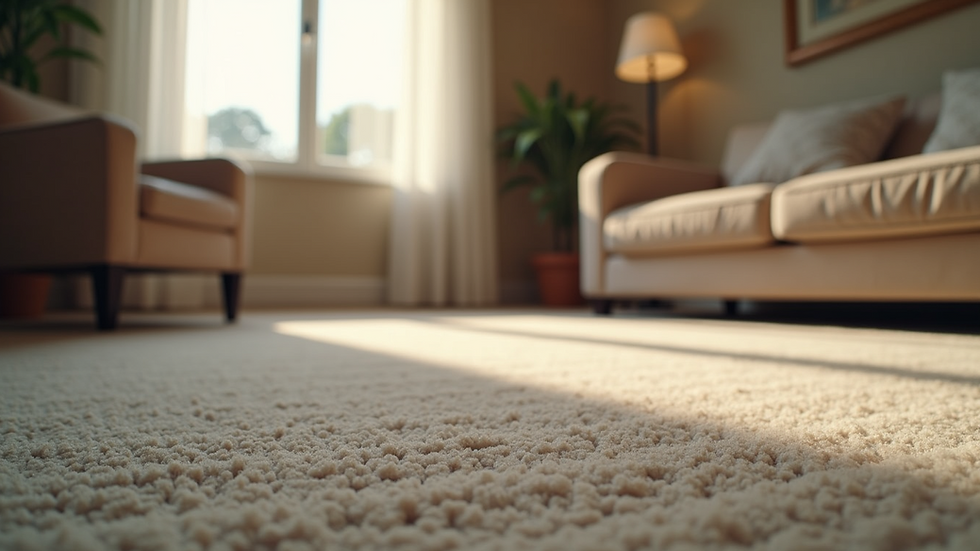Difference Between Carpet Area, Built-Up Area & Super Built-Up Area Explained for First-Time Homebuyers
- Aug 12
- 4 min read
Buying a home is one of the most significant investments you will ever make. As a first-time homebuyer, it’s essential to understand the terminology used in real estate to avoid confusion and make informed decisions. One of the key concepts you’ll encounter is the distinction between carpet area, built-up area, and super built-up area. This blog post aims to break down these terms and help you understand their implications when purchasing a property.
What is Carpet Area?
Carpet area is the actual area within the walls of your home that you can use for living. It is the space where you can directly lay a carpet, which is how it gets its name. Essentially, it includes the area of all the rooms, bathrooms, and balconies but excludes the thickness of the walls.
Example Calculation
Let’s say you are considering a flat with dimensions of 50 feet by 30 feet. The calculation for the carpet area would be:
Area = Length x Width
Area = 50 feet x 30 feet = 1,500 square feet
This means the carpet area is 1,500 square feet. Keep in mind that this is just the usable space for your furniture, flooring, and personal items.

What is Built-Up Area?
The built-up area includes the carpet area plus the thickness of the walls and any other areas such as balconies. This means it accounts for all the element structures that directly connect to your living space. It provides a broader perspective of how much space you are actually purchasing.
Example Calculation
Continuing with our previous example, let’s say the walls of your flat are 1 foot thick, and you have a balcony that covers an additional 200 square feet.
Carpet Area = 1,500 square feet
Wall Thickness Area = Total Wall Area (exterior walls only) = Wall Thickness x Perimeter
Assuming the perimeter = 160 feet (50 + 30 + 50 + 30)
Wall Thickness Area = 1 x 160 = 160 square feet
Balcony Area = 200 square feet
To find out the built-up area:
Built-Up Area = Carpet Area + Wall Thickness Area + Balcony Area
Built-Up Area = 1,500 + 160 + 200 = 1,860 square feet
Thus, your built-up area is 1,860 square feet.

What is Super Built-Up Area?
The super built-up area includes the built-up area plus the share of common areas like hallways, lobbies, lifts, and staircases in a residential building. It helps developers showcase the total area for which they are charging you.
Example Calculation
Assuming the developer informs you that your apartment is entitled to 200 square feet as a share of the common areas.
Super Built-Up Area = Built-Up Area + Common Areas
Super Built-Up Area = 1,860 + 200 = 2,060 square feet
So, the super built-up area for your flat is 2,060 square feet. As a buyer, this is the area you should consider when evaluating the price per square foot.

Understanding the Differences: Why It Matters
Understanding these distinctions is crucial for making an informed purchase decision. For instance, if you are looking for a certain amount of usable space, carpet area will be your priority. On the other hand, super built-up area will give you a complete picture of what you are paying for and how it compares with other properties.
When developers market properties, they often highlight the super built-up area to impress buyers without detailing how much of that is actual usable space. This can lead to misunderstandings and frustration once you move in.
Example Comparison of Areas
| Area Type | Area (in square feet) |
|--------------------|-----------------------|
| Carpet Area | 1,500 |
| Built-Up Area | 1,860 |
| Super Built-Up Area| 2,060 |
In this example, you can see how the numbers vary and why you should pay attention to each specific area type during your homebuying journey.
Tips for First-Time Homebuyers
Ask for Clear Specifications: Always ask developers or agents for detailed specifications related to carpet, built-up, and super built-up areas. Don’t hesitate to ask for a proper breakdown.
Visit the Property: If possible, visit the property to get a better understanding of the space. Take measurements if needed to verify the carpet area looks as advertised.
Consider the Common Areas: While the super built-up area includes shared amenities, evaluate how much you realistically will use those spaces.
Calculate Costs per Area: Divide the total price of the property by the respective area type to get an accurate price per square foot. This can significantly aid in comparing different properties.
Review Developer Credentials: Research the reputation of developers in your area. Well-reviewed builders are more likely to provide transparent information and better construction quality.
Understanding the detailed distinctions and implications of each area type is vital for making an informed purchase.
Moving Forward in Your Homebuying Journey
Now that you have a better grasp of carpet area, built-up area, and super built-up area, you can approach your property search more confidently. Remember to ask questions and do your homework, making sure you choose a home that meets both your needs and budget. The goal is to find a place that feels right for you and your family, both in terms of space and financial investment.
With proper knowledge and a keen eye for detail, you're now equipped to make informed decisions in your home buying journey. Happy house hunting!




Comments